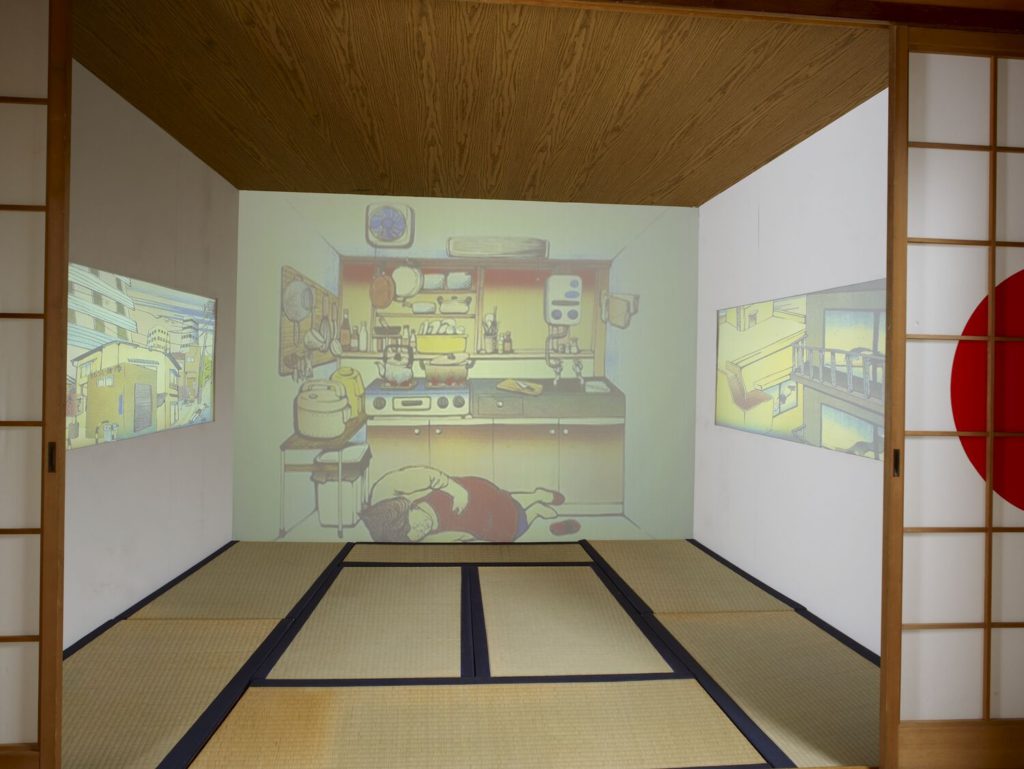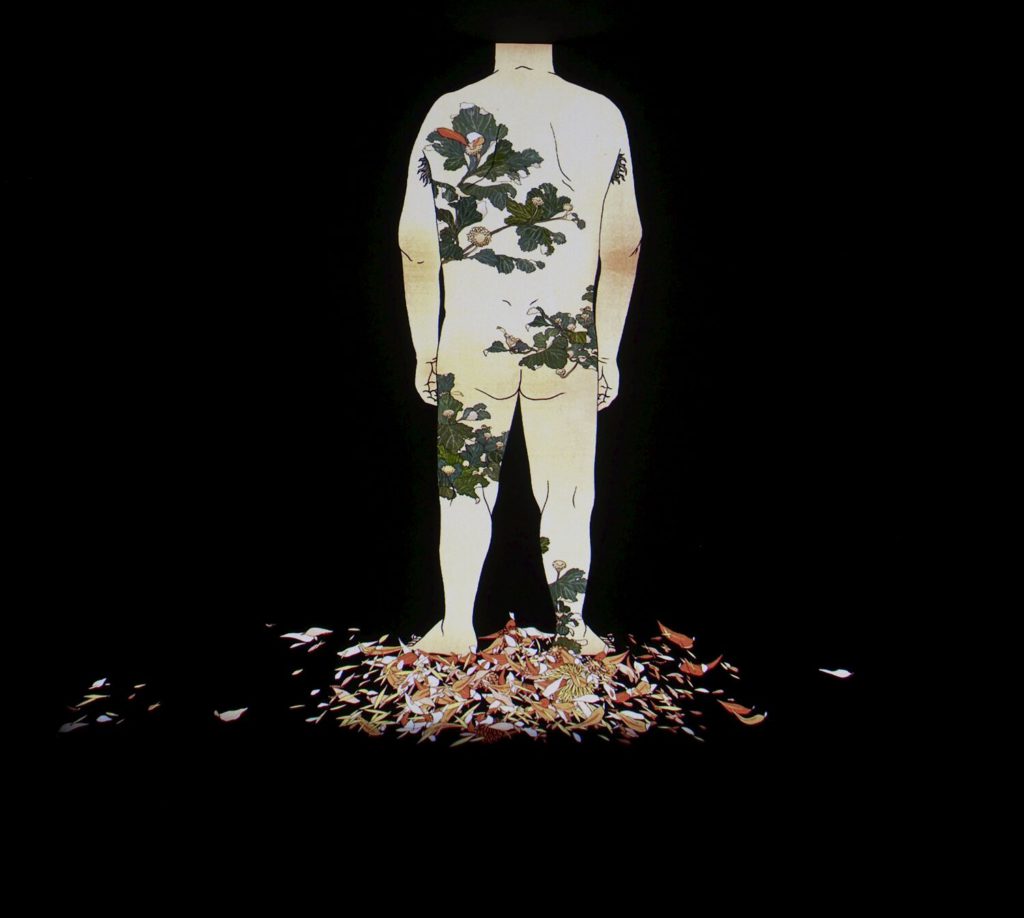
Tabaimo: Boundary Layer
26 May - 6 August 2010
Parasol unit is delighted to present the first solo exhibition in London devoted to the work of the Japanese artist Tabaimo. Since her graduation from art school in 1999, Tabaimo’s innovative and large-scale animated drawings have been extensively shown to major critical acclaim, both in Japan and internationally.
Tabaimo is known for her skilfully drawn and disturbing animations that mix imagery from contemporary Japanese life with digital video technique. Throughout her eleven years of practice the artist has created satirical works that often comment on modern life in Japan, and in particular on the way her own generation attempts to reconcile the realities of today with traditional Japanese values. Tabaimo draws inspiration from a variety of sources, not least from the media and her own personal experience. All animations are hand-drawn by the artist and in their execution and use of colour they are perhaps inspired by traditional Japanese drawings and prints. Tabaimo’s work pulsates with a sense of immediacy that invites viewers to respond to them instinctively rather than react to them through acquired or preconceived knowledge.
The exhibition at Parasol unit is comprised of five video installations: Japanese Kitchen, 1999; hanabi-ra, 2003; guignorama, 2006; public conVENience, 2006; and yudangami, 2009.
Japanese Kitchen, 1999, 5 min 10 sec, was Tabaimo’s graduation work and established her reputation as an artist to watch. Set in a domestic structure the work’s protagonist, a stereotypical Japanese housewife, complains halfheartedly about her problems with little sense of awareness of issues beyond her own doorstep. There is an uneasy atmosphere in this apparently familiar environment and the work is punctuated with surreally unsettling images, such as a politician seen campaigning inside a microwave, and inside a fridge a businessman at work is plucked from his desk and decapitated. The latter is a visual pun on the Japanese expression kubi ni naru (literally, to become a neck), meaning someone has lost their job.
In hanabi-ra, 2003, 4 min 24 sec, literally translated as flower petal, we see the back of a naked man beautifully decorated with colourful flower patterns, similar to that of kimono designs. As time passes a butterfly, a vanitas symbol, appears and flutters around, followed by the image of a carp, symbol of masculinity, migrating swiftly across his back. The film ends by taking a rather unexpected turn.
The title guignorama, 2006, 2 min 36 sec, is taken from the word guinol, which in French means hand-puppet. Apparently, the work was inspired by a chronic skin condition from which Tabaimo suffered in her childhood. Painted in pulsating rainbows of vivid reds, blues and yellows, tangled hands reveal angry tendons and veins which mutate endlessly into strange creatures.
public conVENience, 2006, 6 min 5 sec, plays on the paradox between public toilets and the private acts that occur within them. Set within a female public bathroom, a voyeuristic moth with camera-like eyes captures the surreal acts of its oblivious subjects: a woman examines her nude body in a mirror, whilst inside a cubicle another appears to give birth from her nostril. Symbols of feminine fragility and vulnerability abound in this theatrical video installation.
yudangami, 2009, 4 min 13 sec, is the artist’s most recent work. The title roughly translates as careless hair and was inspired by a serialised novel that Tabaimo was invited to illustrate over the period of a year. An audio track of beautiful and mysterious music accompanies this projection on a large curved screen, in which strange things happen in the interior of a woman’s home – a minor character from the novel. The whole film is seen through a curtain of long, black, straight hair, symbolic of femininity. As events take an increasingly dreamlike turn, a sense of voyeurism merges within the private sphere of the work’s protagonist.
This exhibition is accompanied by a comprehensive publication.
This exhibition is kindly supported by the Daiwa Anglo-Japanese Foundation, The Japan Foundation, The Nomura Cultural Foundation, the Pola Art Foundation and the Great Britain Sasakawa Foundation.











